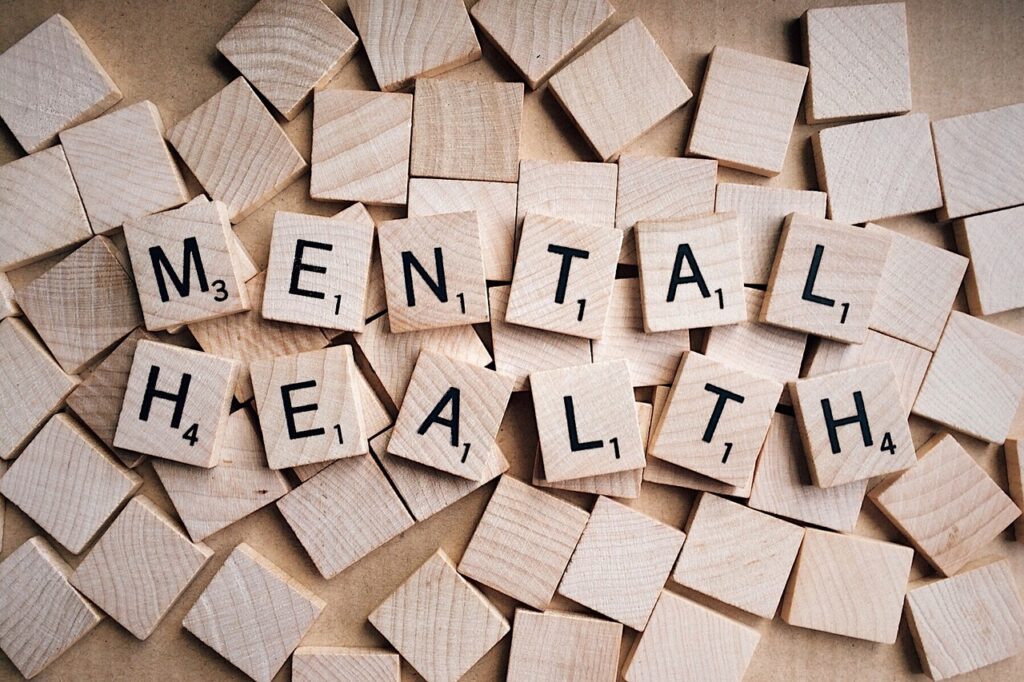Table of Contents
Introduction to Innovative Therapies for Mental Health
Mental health concerns are on the rise worldwide, with statistics showing that one in four adults will experience some form of mental illness during their lifetime. Although traditional forms of therapy are effective, there is a growing need for more innovative approaches to tackle mental health concerns.
Innovative therapies use creative and unique techniques that go beyond traditional talk therapy sessions. These treatments aim to engage patients in different ways, promote relaxation and mindfulness, while encouraging positive behavior change.
If you’re struggling with depression or anxiety, it may be time to explore new avenues as part of your treatment plan. Here’s how innovative therapies can help:
- Creativity and play: Often used in art and music therapy sessions, patients can tap into their creativity and imagination as a way of exploring emotions they may not feel comfortable sharing verbally.
- Exposure Therapy: Virtual reality exposure therapy (VRET) uses technological advancements by immersing patients into virtual scenarios where they face triggers related to their conditions; thus promoting self-confidence and reducing negative symptoms such as Post-Traumatic Stress Disorder (PTSD).
- Holistic Approaches: Mindful meditation combines breathing techniques with visualization exercises aimed at creating an awareness about thoughts — therefore increasing emotional regulation skills in individuals who struggle with impulse control disorders like bipolar disorder or borderline personality disorder.
- Animal-Assisted Therapy: Leveraging human-animal connections reduces cortisol levels associated with stress perception by providing physical contact through petting animals – whether it’s dogs, cats or even horses. In turn, it helps to reduce anxiety and increase feelings of comfort and relaxation.
- Technology-Assisted Therapies: Tools like mobile applications with cognitive-behavioral therapy modules allow patients to access therapeutic activities from the convenience of their smartphones while maintaining consistency in tracking progress over time
- Group Psychotherapy: Group sessions often provide a supportive community where individuals can share experiences, insights, and validate each other’s emotions – Making people feel less isolated which is vital when dealing with depression.
New innovative therapies are being developed every day. Investing your time in exploring different approaches will open doors towards more effective ways of treating mental health concerns. Caregivers should also make an effort to research these newer treatments for their loved ones who might benefit from them!
A better tomorrow lies ahead- today- through innovation.
The Benefits of Mindfulness and Meditation in Treating Mental Illness
Mindfulness meditation is a practice that has been around for thousands of years. It’s proven to be an effective treatment approach, helping people find relief from anxiety, depression and stress-related disorders.
When someone practices mindfulness, they learn how to pay attention in the present moment without judgment. This helps them become more aware of their thoughts and feelings and develop new ways of relating to them. By doing so, individuals can break free from negative thought patterns that keep them stuck in their emotional struggles.
The benefits of mindfulness meditation are numerous. For example:
- Improved Mood: Those who meditate regularly report increased levels of happiness.
- Better Emotional Regulation: Mindfulness Meditation teaches people how to notice their emotions without becoming overwhelmed by them or acting impulsively on those emotions.
- Increase Resilience: Research shows that this form of meditation enables you to better cope with fear-inducing experiences and help build up your resilience against future stressful events..
This ancient practice has regained popularity among mental health professionals precisely because it offers such concrete results without relying on medication alone as a source for healing.
How Art Therapy Can Help Improve Emotional Well-being
Art therapy is a form of expressive therapy that involves using creative methods such as drawing, painting, and sculpting to help individuals communicate their thoughts and emotions. Art therapy can be helpful for people of all ages who are struggling with emotional issues or mental health concerns.
Studies have shown that art therapy can improve emotional well-being in several ways. First, it provides a safe and supportive space for individuals to express themselves without fear of judgment. This can help reduce feelings of isolation, loneliness, and shame.
Art therapy also allows individuals to explore complex emotions that may be difficult to put into words. Through the creation process, art therapists encourage clients to reflect on their artwork and discuss how it relates to their inner experiences.
In addition to improving emotional regulation skills, art therapy has been found effective in reducing symptoms associated with anxiety disorders and depression. Engaging in artistic activities helps increase levels of dopamine in the brain which leads to positive feelings associated with pleasure.
The Benefits:Creativity: Artistic creativity encourages self-expression processes allowing an individual’s personal viewpoint come out from inside them through color schemes; they might not be able to voice otherwise. Mental Relaxation: Art allows you time detach from daily stressors related work-life balance – routine works relaxing the mind by enhancing calmness- while focused within your own creativity. Sensory stimulation: Many individuals enjoy different sensory experience like playing instruments or having new environments around when creating art pieces this stimulates all five senses giving therapeutic results. The above benefits result in enhanced confidence! One starts feeling better about themselves when they see what they create helping them feel accomplished even if expressing what’s happening internally would never have believed possible before engaging in an expressive form of therapy that caters to their needs and personal preferences.In conclusion, art therapy is a powerful treatment tool for emotional and mental health problems. It can help reduce stress levels, improve cognitive functioning, increase self-esteem, facilitate post-traumatic growth and support the development of positive coping mechanisms. By creating a safe space where individuals can find solace in expressing themselves through various forms of artistic media.
Incorporating Animal-Assisted Therapy into Treatment Plans for Anxiety and Depression
Anxiety and depression are debilitating mental health problems that affect millions of people worldwide. While there are different treatment options available, animal-assisted therapy has been shown to have significant benefits in managing these conditions.
Animal-assisted therapy (AAT) is a type of therapy where trained animals such as dogs, cats, birds, horses and even dolphins help alleviate symptoms of anxiety and depression. AAT provides a comforting presence that helps patients relax and focus on the present moment instead of worrying about past or future events.
Studies have shown that interacting with animals can aid in reducing stress levels by releasing feel-good hormones such as oxytocin while decreasing cortisol levels which is responsible for inducing stress.
A variety of techniques can be used during AAT sessions including petting, grooming or playing games with the animal. Patients often find comfort in having an animal close to them since it creates a secure environment facilitating better communication between patient and therapist.
The bonds humans form with animals provide therapeutic benefits that cannot be replicated through human-to-human interaction alone. Animals offer unconditional love without judgment providing emotional support for those struggling with anxiety or depression.
In addition, AAT has been found effective for patients undergoing treatments like chemotherapy or individuals recovering from surgical procedures by providing moral support along their healing journey.
If you’re someone looking into exploring animal assisted therapy for your anxiety/depression issues; make sure you consult first with your therapist whether it’s right time to implement this method into your overall plan.
Virtual Reality (VR) Exposure Therapy: A Breakthrough Approach to PTSD
Post-Traumatic Stress Disorder (PTSD) affects millions of people worldwide. Although several traditional treatments are available, such as medication and cognitive-behavioral therapy, many individuals continue to experience the debilitating symptoms of PTSD.
Recently, researchers have started exploring the use of Virtual Reality (VR) Exposure Therapy to treat PTSD symptoms. VR technology creates a simulated environment where patients can confront their fears in a controlled and safe setting.
The primary purpose of this innovative treatment is to help patients become desensitized to traumatic events by gradually exposing them to stimuli that trigger anxiety or fear. This exposure allows them to develop coping strategies and learn how to regulate their emotional responses in real-life scenarios.
What Happens During VR Exposure Therapy?In VR Exposure Therapy sessions, therapists create simulations based on specific phobias or triggers unique to each patient’s experiences with PTSD. For example, if a patient has experienced trauma related to car accidents, they may be exposed virtually into driving scenarios that re-create similar circumstances as past events.
The therapist will guide you through different stages:- You’ll first put on your headset and immersed yourself into an immersive virtual reality world created specifically for you by an expert therapist.
- You’ll feel like you’re entering a new world- one where you’re surrounded by realistic sounds and visuals designed specifically for your needs..
- Your therapist will ask targeted questions about what you see or hear at any given moment while following along every action taken during simulation which helps give valuable feedback..
One of the significant advantages of VR Exposure Therapy is that it allows patients to confront their fears without endangering themselves or others. This controlled environment permits them to work through traumatic experiences at a pace they’re comfortable with and minimize potential triggering situations.
Another benefit is the ability to customize simulations based on individual PTSD diagnoses, which makes therapy tailored explicitly for each person’s unique needs. Patients can review and revisit these simulations until they feel comfortable enough with the experience or move onto more challenging environments when ready.
The Future of VR Exposure TherapyThe use of VR technology in treating mental illnesses such as PTSD is still relatively new but continues to show promising results. As this treatment method becomes more prevalent, researchers may find ways to incorporate other therapies into virtual reality settings, providing even more comprehensive care for individuals struggling with trauma-related disorders.
The Future of Innovative Therapies for Tackling Mental Health Concerns
In recent years, there has been a surge in interest and research around innovative therapies for treating mental health disorders. As technology advances and our understanding of the complex nature of mental illness grows, it’s becoming increasingly clear that traditional approaches to treatment are not enough.
One promising area of development is the use of artificial intelligence (AI) and machine learning algorithms to better diagnose and treat mental health conditions. By analyzing large sets of patient data, AI-powered systems can more accurately identify patterns and predict outcomes, allowing for personalized treatment plans tailored to each individual’s unique needs.
Another exciting advancement is the rise of teletherapy – remote counseling sessions conducted via video chat or other digital means. This approach offers a range of benefits over traditional face-to-face therapy, such as increased convenience and accessibility for those who may live in rural areas or have mobility issues.
Virtual reality (VR) therapy is also emerging as a powerful tool for treating anxiety disorders like PTSD. By placing patients in realistic simulated environments that trigger their fears or traumas at controlled levels, VR therapy allows them to confront these challenges in a safe space before translating newfound coping mechanisms into real-world scenarios.
Beyond technology-based solutions, there are also many exciting developments happening in more creative therapeutic approaches. Music therapy has shown promise in improving mood regulation among individuals with depression while dance/movement therapies have proven effective at reducing symptoms associated with trauma-related stress disorders.
In conclusion, innovation holds great promise when it comes to addressing the pressing need for improved mental health treatments around the world. Whether through cutting-edge tech solutions like AI-driven diagnosis tools and remote teletherapy services or more holistic approaches like music/dance therapies, the future looks brighter and more positive than ever for those struggling with mental health concerns.



